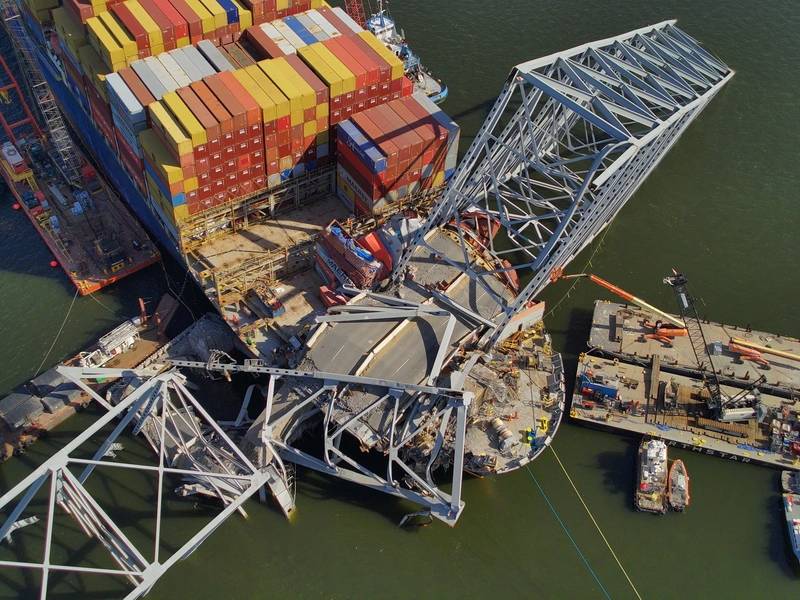US Studying if Other Bridges at Risk After Baltimore Collapse
The U.S. Coast Guard said it is evaluating whether other bridges nationwide are at risk after a cargo ship crashed into the Francis Scott Key Bridge in Baltimore in March, killing six people and destroying the Patapsco River crossing.
Coast Guard Vice Admiral Peter Gautier said at a U.S. House hearing on Wednesday that the "size and complexity of ships has grown over the years, placing greater demands on our marine transportation infrastructure that may not have kept pace with the increased risks that these vessels pose."

Gautier is convening a nationwide board of inquiry will assess current risk management tools and propose actions to "reduce the risks of major incidents."
National Transportation Safety Board chair Jennifer Homendy said at the hearing her agency has been recommending since 1988 that the Coast Guard and Federal Highway Administration review the adequacy status of pier protection for bridges over navigable waters, U.S. ports and waterways.
She praised the Coast Guard announcement of its planned review but said states, the federal government and bridge owners must also review any bridges that could be at risk and urged them not to wait.
"Do a risk assessment -- you can do that now," Homendy said.
Federal Highway Administrator Shailen Bhatt said the government is in touch with states to look at ways to bolster protection for vulnerable bridges. He said they already have a preliminary list of bridges and are looking at what protections are quickly deployable.
"How do we get these bridges protected?" Bhatt said at the hearing. "How do we update design standards given the ever changing ever nature of the vessels that are underneath?"
In April, the FBI opened a criminal probe into the collapse. Maryland estimates it will cost $1.7 billion to $1.9 billion to rebuild the bridge and anticipates completion by fall 2028.
U.S. crews in Baltimore set off controlled explosions on Monday to allow them to remove a portion of the bridge from the bow of the Dali. This will allow salvage crews to haul away the twisted metal wreckage using cranes and barges, the U.S. Army Corps of Engineers said.
(Reuters - Reporting by David Shepardson; Editing by Michael Erman)
